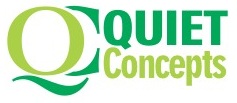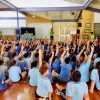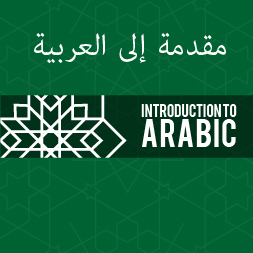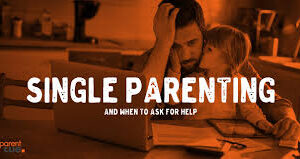METHODS OF TEACHING RUDIMENTARY ARABIC LANGUAGE TO STUDENTS WITH LEARNING DISABILITIES IN SELECTED SECONDARY SCHOOLS IN OYO WEST LOCAL GOVERNMENT
₦3,000.00
The concern of this study is to investigate the methods used by teachers in teaching rudimentary Arabic language to students with learning disabilities in selected schools in Oyo West local Government. This study is also carried out to ascertain the effectiveness or otherwise of the teaching methods.
Description
INTRODUCTION
Language remains an intricate multifunctional phenomenon that facilitates human communication. The utilities of foreign language learning transcend the benefit of obtaining an academic qualification for employment. Foreign language learning is now construed as a facilitator of globalization and a strong vehicle of fostering world peace and intercultural understanding in a world of extreme diversities. Emenajo (2005) states that the de facto National Policy on Languages in education recognises the multidimensional, multi-lingual three tier political-polity which tries to capture the multi-ethnic and, ipso facto, multi-lingual polity which Berlin and the British have hammered into a rough-hewn existence. Nigerian language in education is in three forms: L1 is a Nigerian Language; L2 is British and L3 is either another Nigerian Language, French or Arabic. Whereas most Southerners who are non-l\/luslims will have French as L3, most Northerners who are Muslims will have Arabic as L3.
There is no doubt that Arabic Language has an exceptional position in Islam. Allah has chosen the Arabic Language as an effective medium of communication for His message. Arabic is not only a language per se, but a language that has been chosen by Allah to communicate with His servants. Allah says in the Quran: Verily, We have sent it down as an Arabic Quran in order that you may understand Quran 12:2).
Faryadi (2002) states that Allah is directly telling us that learning Arabic is very crucial in understanding His message. Indeed, in order to understand the beauty of Al-Quran, the revelation by which Allah has sent down His messages, one must make the learning of the Arabic Language a priority. In the educational arena, Nigeria is one of the fastest developing countries in the world. Arabic Language has been a pivotal to economic and educational development in northern Nigeria. The sub-division of makranta Alo and makranta llmi in North before the advent of the Western education cannot be robbed off from the history of Nigerian education.
Zubair (2012) states that the importance of Arabic language in promoting unity and friendship in the Muslim world has always been keenly felt and stressed by sincere and upright Muslim leaders. These leaders have also apprised people about the importance of the Arabic language for the ‘Muslims and have also warned against the adversaries of Islam, particularly the Western imperialists, who are very active in diverting the Muslim mind from the Arabic language and alluring it to the false glamour of other languages. They have been doing this by dint of the political sway, which they have held over Muslim lands for a considerable period of time. In certain cases, these political powers even succeeded in winning over the Muslims to abandon the Arabic Script in favour of the Roman script.
1.1. Background to the Study
Sirajudeen and Adebisi (2012) state that Arabic language in Nigeria has been used and is still studied, largely, for liturgical as well as academic purposes. The study of Arabic for communicative ends is limited compared to the religious and academic utilities for which the language has been subjected. This, of course, restricts the competences of the graduates who are constricted to function as Arabists within Nigeria alone.-Apart from the extremely limited population of Shuwa Arabs of Northeast Nigeria who speak a dialect of Arabic language as Mother Tongue, the overwhelming majority of users of Arabic are also multilinguals who studied Quranic Arabic or Modern Standard Arabic (MSA) as a non—native linguistic code.
While logic states that judging a thing is part of its perception, the current situation of the Arabic language in general, and on many levels, is unbecoming; not due to the nature of the language itself (syntax, structure or patterns), but mainly on account of the inattention and carelessness shown by its speakers, particularly the exclusion and marginalization displayed by public officials who hold the key of bringing Arabic back to life, instead of constraining its use.
Othoman (2017) opines that while Arabic is gaining ground, albeit in a limited way, especially in social networks and the media bye and large, it is regressing at the school level for several reasons, including weaknesses in the methodology, and poor teachers’ academic qualification and pedagogical competence in addition to their dwindling social position. Suffice it to look, in this regard, at the category of students who join Arabic language departments at faculties of letters and education and teachers’ training centers. They are usually composed of students who failed to join other faculties and found themselves compelled to make this choice, which, in turn, impacts negatively pedagogical content on the knowledge level of these faculties’ graduates, particularly those employed as teachers in primary, secondary and high school levels. Even worse and more regretful is to see that quite a few Arabic language M.A and PhD holders, who join academic teaching positions in universities, reflect the inappropriate situation of the Arabic language, and on many occasion present a counterproductive image of it.
The problem lies not in the Arabic language, but in the influencing objective factors that were mentioned earlier. The language, as such, is not difficult to comprehend or learn as long as there is willingness to learn, study, and perfect it. lt does not set obstacles by itself; the obstacles come from the outside. There is no such thing as a difficult/hard-to-learn language and an easy-to—learn language. lf the drive, determination and the appropriate educational environment are there, the motivations to learn and master a language become quite easy.
Othoman (2017) further affirms that there is no doubt that the Arabic language teaching methods do not overall influence nor facilitate its acceptance or attractiveness. Teaching of Arabic language is known with coercive method that is accomplished with negative reinforcement. Hardly will you see an Arabic learning centre without the use of different canes and whips. Also, the style of memorizing volumes of Arabic grammar books have made the subject not interesting to learn by students. However, in recent time, new methods of teaching Arabic language have been worked on by Arabic language scholars. Among these methods are computer mediated teaching methods, plan-oriented learning models, creativity and effective strategies, dealing with students according to their mindset method and the key word method. Despite the improvements introduced by supporters of the Arabic language, among educational experts and specialized linguists over the last seven decades, and the publishing of textbooks and books on grammar and rhetoric based on new methods and with an innovative design, the vast majority of Arabic language teachers were not influenced enough by the results reached in that field, and no significant change occurred in Arabic teaching methods. In short, the language situation did not improve enough as to mitigate the impact of the language crisis, epitomized by the prevailing language weakness, the limited scope of its perfection and promotion to restricted circles and the widespread use of vernacular Arabic and colloquialisms.
Children with learning disabilities are also among those who have passion for Arabic language as learning disability is not destined to a particular tribe or religious sect. According to Association Cannadeine des Troubles d’Apprentisage
(ACTA, 2015), learning disabilities refer to a number of disorders which may affect the acquisition, organization, retention, understanding or use of verbal or nonverbal information. These disorders affect learning in individuals who otherwise demonstrate at least average abilities essential for thinking and/or reasoning. As such, learning disabilities are distinct from global intellectual deficiency. Learning disabilities result from impairments in one or more processes as related perceiving, thinking, remembering or learning. These include, but are not limited to: language processing; phonological processing; visual spatial processing; processing speed; memory and attention; and executive functions like planning and decision-making.
Tayo, Ajibade, and Oialekan (2009) state that learning disabilities range in severity and may interfere with the acquisition and use of one or more of the following; oral language (e.g. listening, speaking, understanding), reading {e.g, decoding, phonetic knowledge, word recognition, comprehension), written language (e.g. spelling and written expression), and mathematics {e.g. computation, problem solving). Learning disabilities may also involve difficulties with organizational skills, social perception, social interaction and perspective taking. Tayo, et al (2009) further explain that learning disabilities are life-long. The way in which they are expressed may vary over an individual’s lifetime, depending on the interaction between the demands of the environment and the individual’s strengths and needs. Learning disabilities are suggested by unexpected academic under-achievement or achievement which is maintained only by unusually high levels of effort and support.
Based on this, it is essential to look into the method that school teachers may adopt to teach rudimentary Arabic Language to students with learning disability and this is what this study intends to look into.
1.2 Statement of the Problem
Method of teaching is a great factor that have impact not only in the teaching-learning process but also on the achievement of the students. The cognitive development of a student depends on the method that the teacher used to impact knowledge to him. A teacher who adopts a good and befitting method of teaching will realize that the concept he is teaching to the students will be easier for students to learn. As a result, the students will conclude that the subject is simple.
The explanation above shows that students who have found Arabic Language difficult should not be totally blamed, the method adopted by the teacher teaching the students should also be checkmated. What now bothers the mind of the researcher is that those who are not learning disabled are not proficient in Arabic language. As a result, it is believed that children with learning disabilities will have more challenges learning Arabic language. Hence, this study intends to look into the method adopted by Arabic teachers in teaching rudimentary Arabic language to students with learning disabilities in Oyo West Local Government, Oyo State.
1.3 Purpose of the Study
The concern of this study is to investigate the methods used by teachers in teaching rudimentary Arabic language to students with learning disabilities in selected schools in Oyo West local Government. This study is also carried out to ascertain the effectiveness or otherwise of the teaching methods.
1.4 Research Questions
- What are the methods adopted by Arabic language teachers in teaching rudimentary Arabic language to students with learning disabilities?
- What are the methods of teaching that are useful in teaching Arabic language to students with learning disabilities in Oyo West Local Government of Oyo State?
- To what extent does the use of appropriate teaching method affect the teaching and learning of Arabic to children with learning disabilities in Oyo West Local Government of Oyo State?
1.5 Significance of the Study
Findings from this study will provide an insight into the methods adopted by teachers in teaching rudimentary Arabic to students with learning disabilities. This study will be of help to many people in the society as it will be of benefit to educational planners and educational managers. The study is also of significance to special educationists taking care of the educational curriculum of special students in Nigeria. In addendum, the study will be of immense benefits to teachers teaching students with learning disabilities in secondary schools. Without doubt, this study will really be of great benefit to the Ministry of Education, and government at large by aiding the design of appropriate educational policy suiting the use of appropriate methodology in teaching Arabic Language to students with learning disabilities in Nigeria.
1.6 Scope of the Study
This study investigated methods adopted by Arabic language teachers in teaching rudimentary Arabic to students with learning disabilities at junior secondary schools in Oyo West Local Government, Oyo State.
The investigation is conducted with particular reference the appropriateness and effectiveness of the methods.
1.7 Definitions of Terms
Teaching Methods: This refers to the styles adopted by teachers in impacting knowledge into studs during teaching-learning process.
Rudimentary Arabic Language: This refers to the basic knowledge of Arabic language that all Arabic language learners need in order to grasp the meaning of the language.
Learning Disabilities: In this study, this refers to a situation of having disorder in knowledge acquisition.
Students with Learning Disabilities: This refers to students who are having disorder in knowledge acquisition either since their birth or by accident.







Reviews
There are no reviews yet.